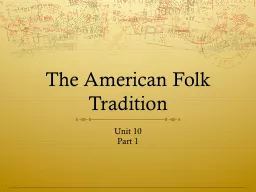PPT-Folk Housing: Key to Diffusion
Author : celsa-spraggs | Published Date : 2017-06-30
Fred Kniffen 1965 What are Kniffens goals Settlement geography Focus on houses and barns Housing a basic fact of human geography Sense of urgency unchronicled wooden
Presentation Embed Code
Download Presentation
Download Presentation The PPT/PDF document "Folk Housing: Key to Diffusion" is the property of its rightful owner. Permission is granted to download and print the materials on this website for personal, non-commercial use only, and to display it on your personal computer provided you do not modify the materials and that you retain all copyright notices contained in the materials. By downloading content from our website, you accept the terms of this agreement.
Folk Housing: Key to Diffusion: Transcript
Download Rules Of Document
"Folk Housing: Key to Diffusion"The content belongs to its owner. You may download and print it for personal use, without modification, and keep all copyright notices. By downloading, you agree to these terms.
Related Documents














